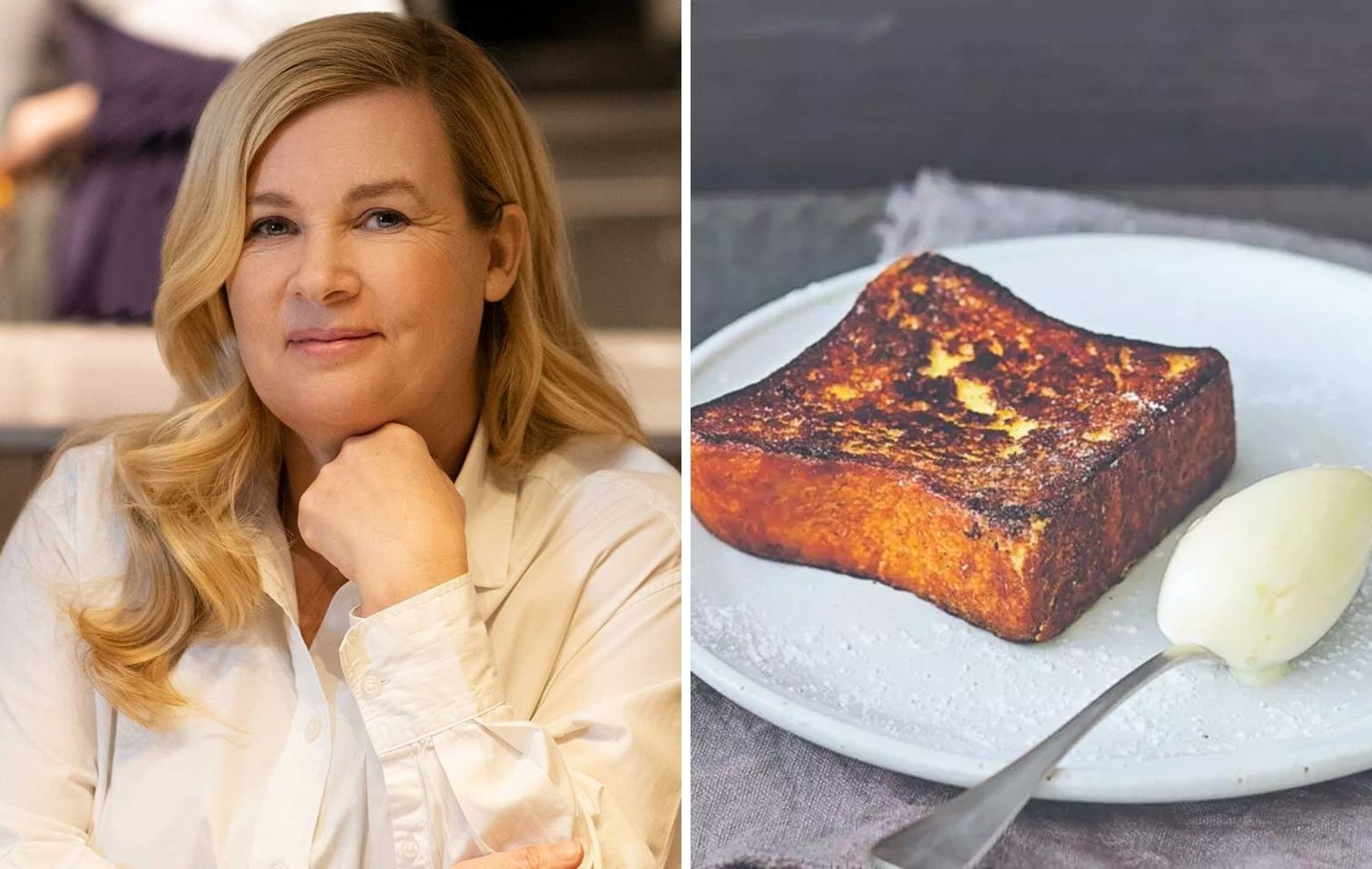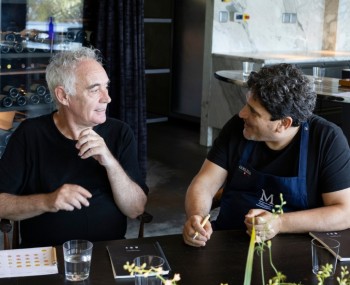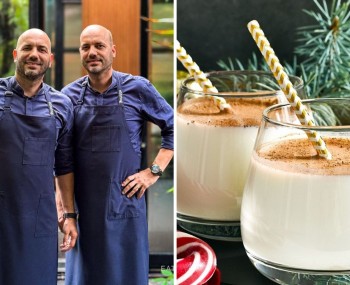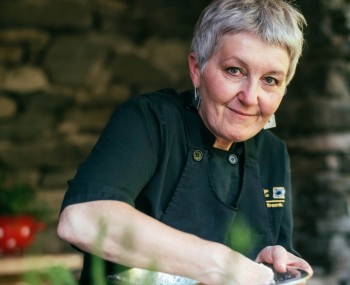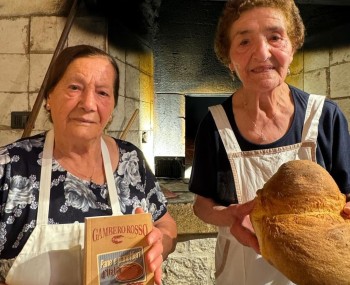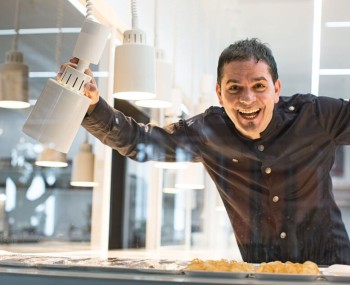Inviting crispness, toasty scents and a texture that ennobles stale bread: the magic of pain perdu in Hélène Darroze's original recipe.
Recipe from Les recettes de mes grands-mères, published by Le Cherche Midi and illustrated by Pierre-Louis Viel.
Photo of the dish by Pierre-Louis Viel
The dessert
There are few recipes as satisfying as virtuous as Pain Perdu, a typical example of reusing bread from days gone by that would otherwise be “lost” among pantry leftovers. Created precisely to “save” the hard slices thanks to a strategic passage in the pan, where the sugary part caramelizes (in the wake of the U.S. French toast ), it confirms itself as a dessert capable of tempting even those who usually dislike desserts on the plate. This is well known by award-winning Hélène Darroze, who dusted off her family notebooks to come up with an author's version that is both greedy and updated in method: “This dessert is my Proust's Madeleine, a childhood constant,” she confesses to Le Figarò.

“My grandmother often made it with stale bread. On my way home from school, when I smelled the scent of the baking snack already at the bottom of the stairs of her house, I was beside myself with happiness! At our house we never threw away the leftover leavened bread: sometimes we gave it to the chickens, but mostly we reused it in soups, meal ends or salads, scenting the 'old' crumbs with garlic to make croutons. Pain perdu was my favorite option, however. A hearty and nutritious dish for children, it was also educational as it taught them the deep value of food. I don't remember exactly my grandmother's recipe; I, however, came up with a mix of milk and cream for a more refined version."
Hélène Darroze's Pain Perdu recipe
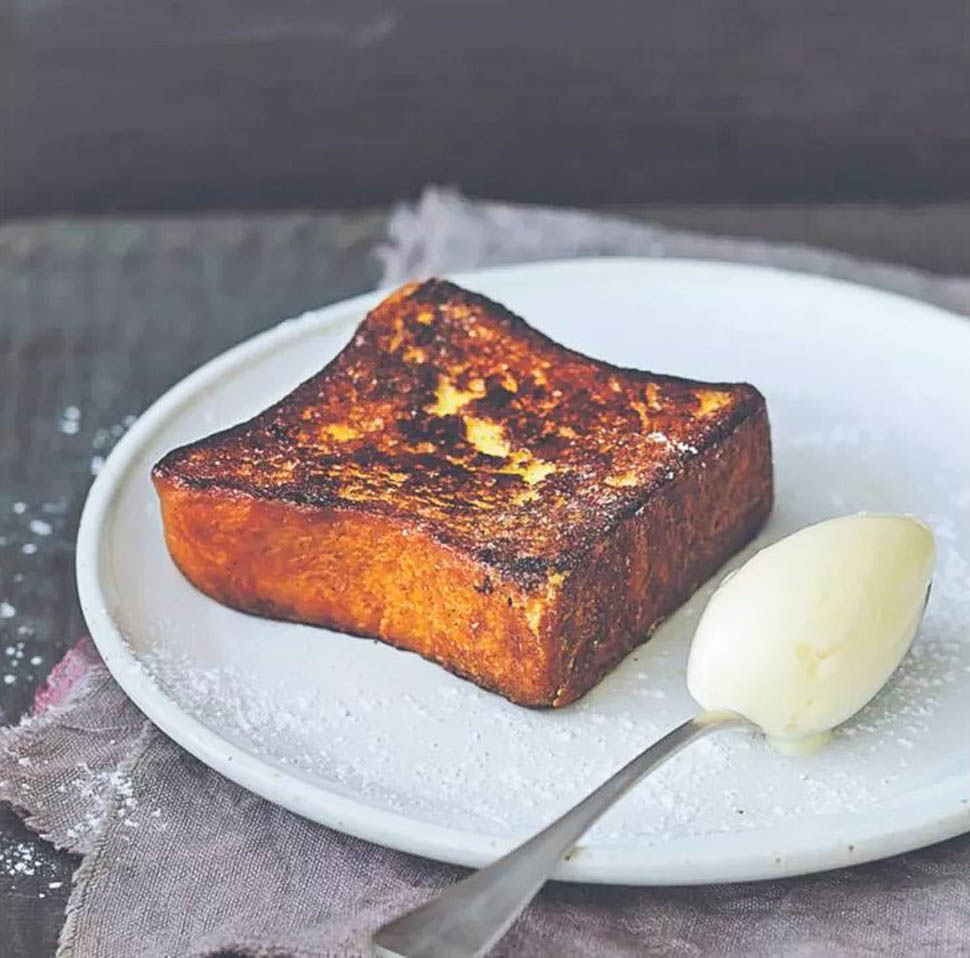
INGREDIENTS FOR 4 PERSONS
- 8 1.5 cm slices of stale bread or brioche
- 50 cl of milk
- 25 cl liquid cream
- 1 vanilla pod
- 2 egg yolks
- 55 g sugar
In a saucepan combine the milk, cream and vanilla pod cut in half lengthwise, then bring everything to a boil. It is necessary to let the spice steep so that the vanilla fully diffuses its flavors.
Pour the sugar into the hot milk with cream so that it dissolves.
In a bowl beat the egg yolks then add the milk, cream and sugar mixture. Allow to cool.
Once cooled, pour the mixture into a dish so you can dip the bread slices into it, turning them over and letting them soak well. Place the moistened bread in a pan after heating a knob of unsalted butter in it.
Wait for the bread to gain color on all sides until the milk-egg mixture has set. (“Be careful to monitor the cooking, as slices can burn!” advises the chef). Keep the heat low. When ready, remove the slices from the pan, arrange them on a plate and sprinkle with sugar, possibly powdered sugar. To make them even yummier, you can add some sugar already during baking by “caramelizing” the bread.
Chef's note: pairing and topping
"When I make French toast in my Joia bistro, I refine the recipe by making the brioche myself. The toast can be served with jam or vanilla ice cream. I also like it with grilled or lightly cooked fruit. An example? Apples and pears warmed in a pan with a little butter and sugar, plus some fresh, decorative lime zest.
Loving Japanese tea, I pair the dish with genmaicha (green tea with roasted rice), but it also marries well with a cider for end-of-mouth acidity."
